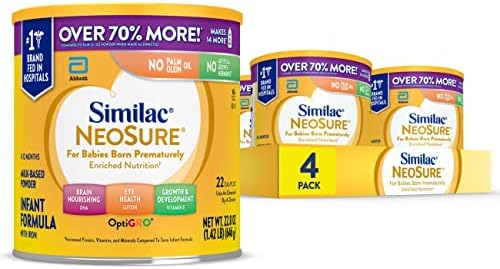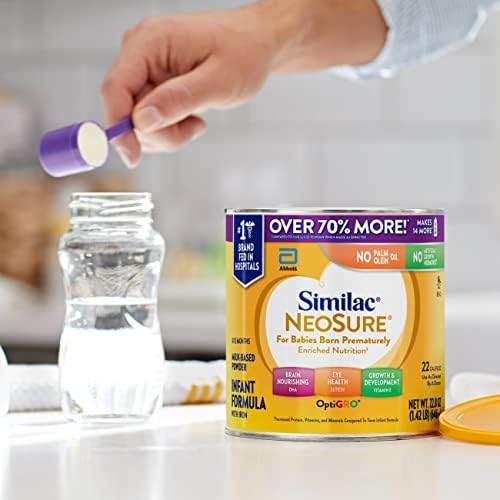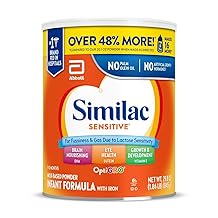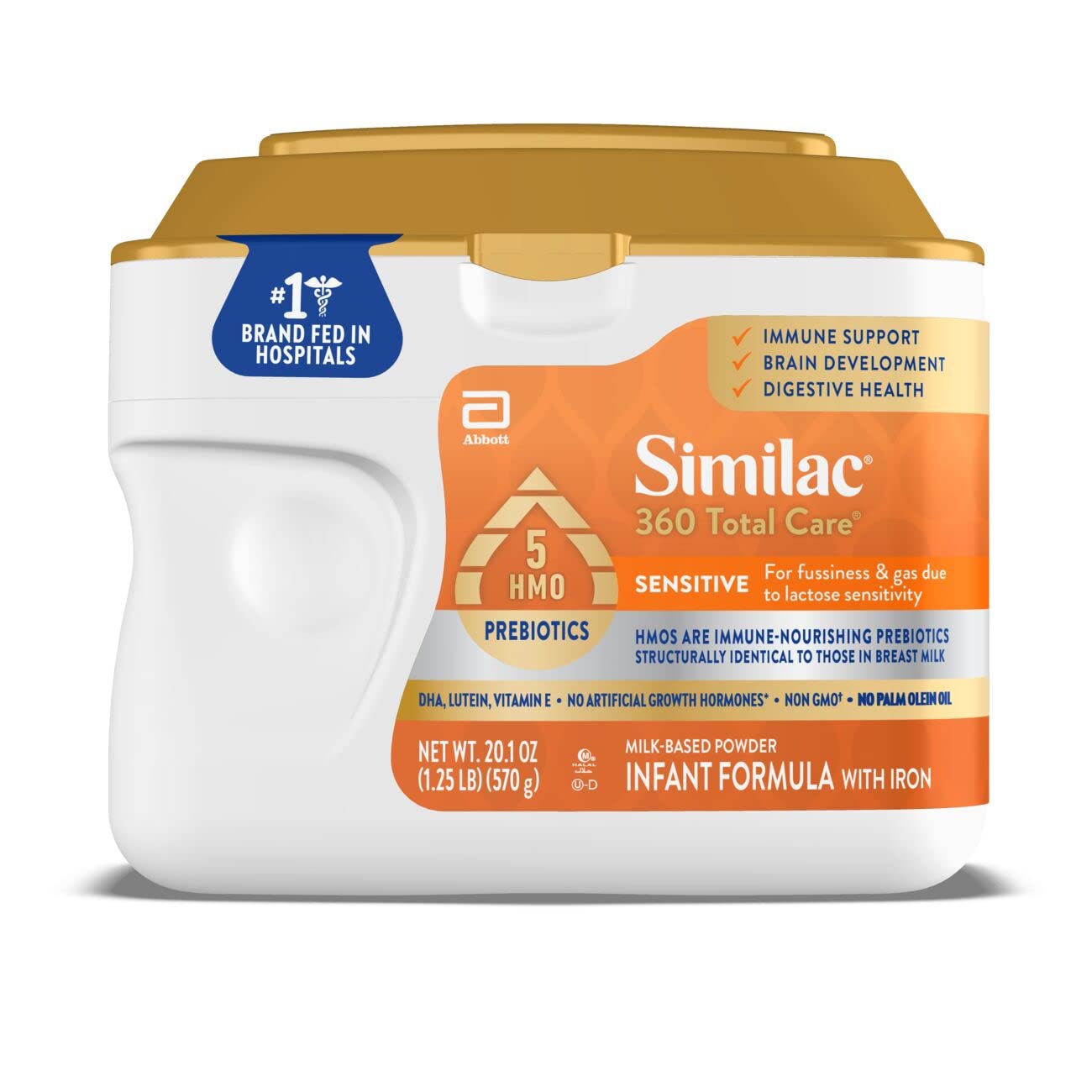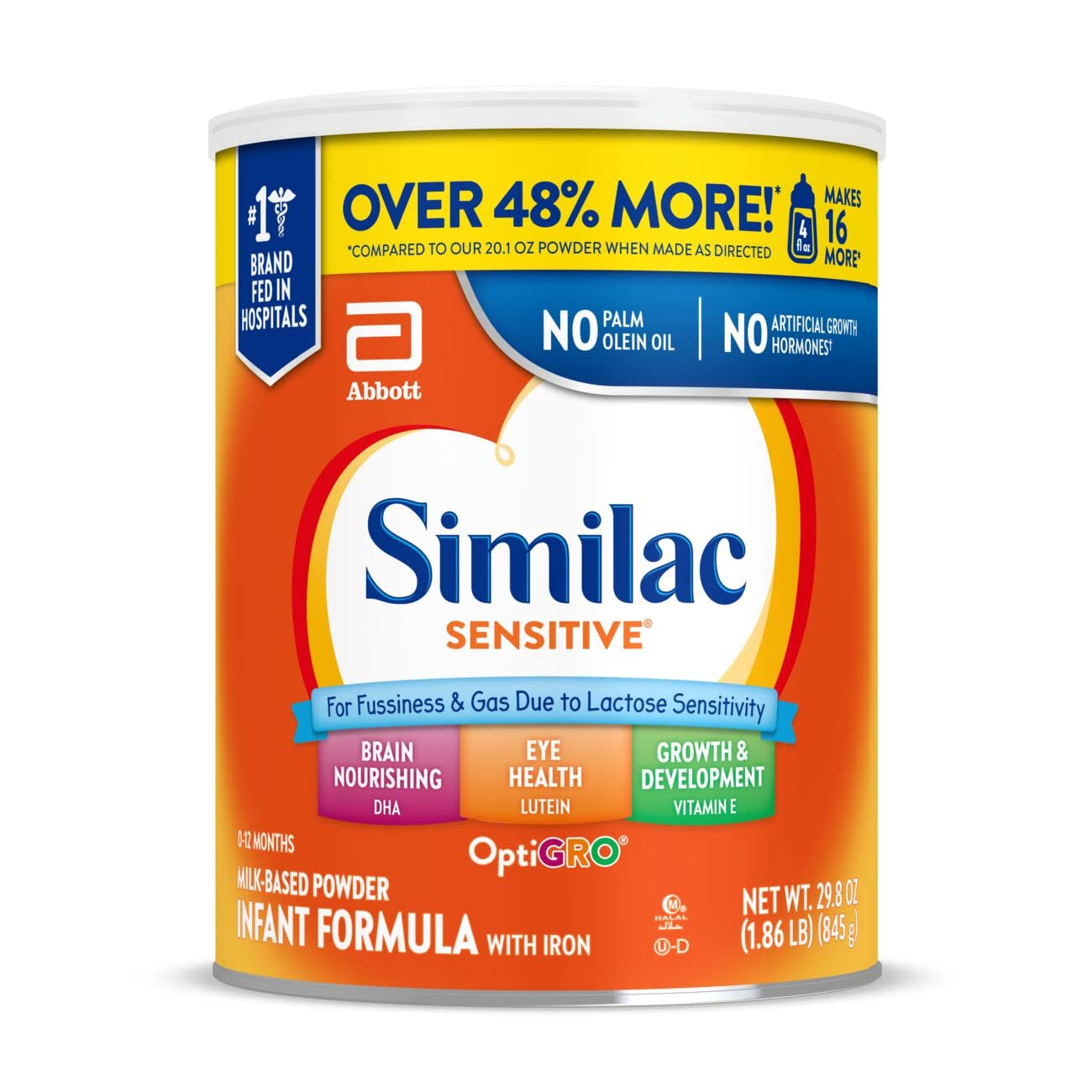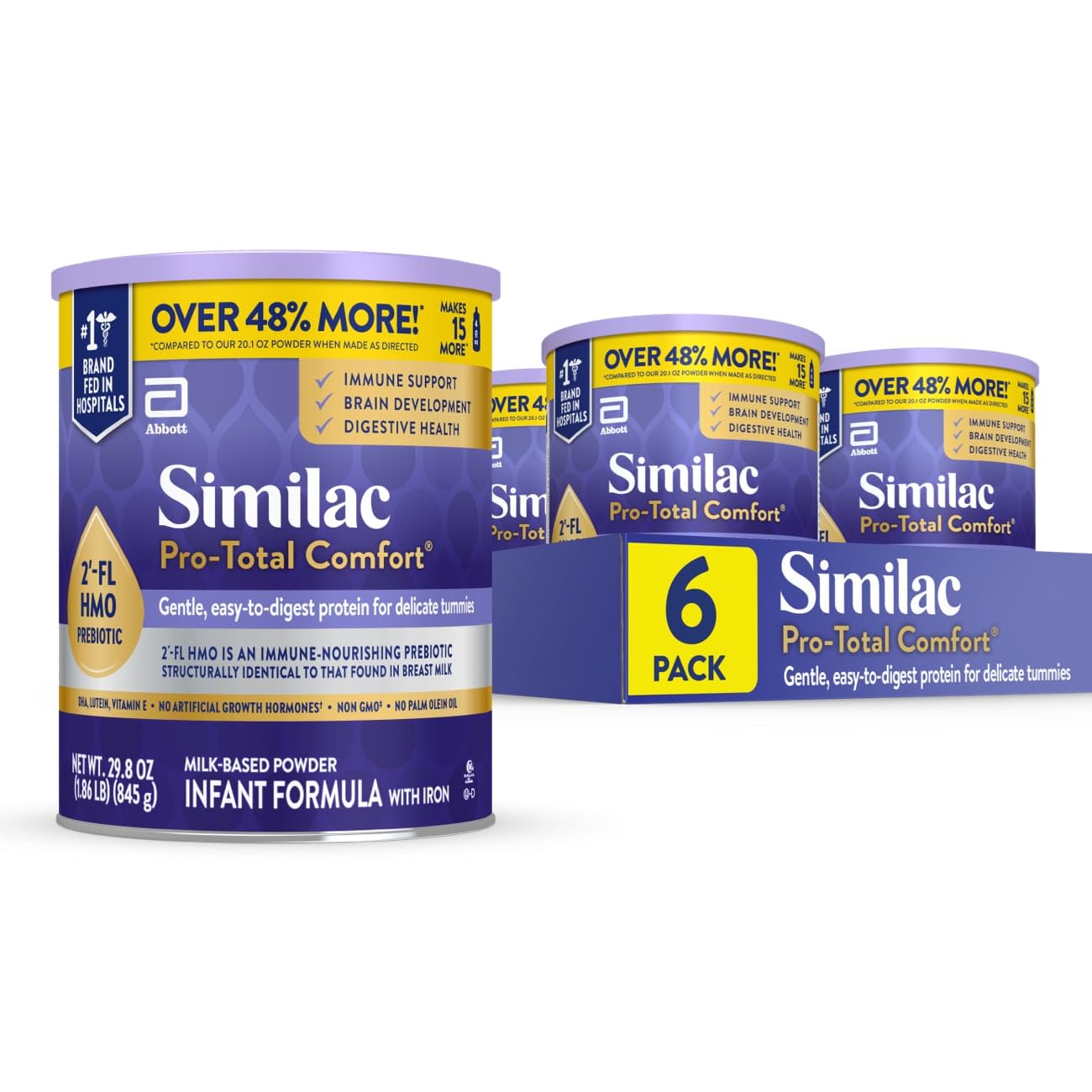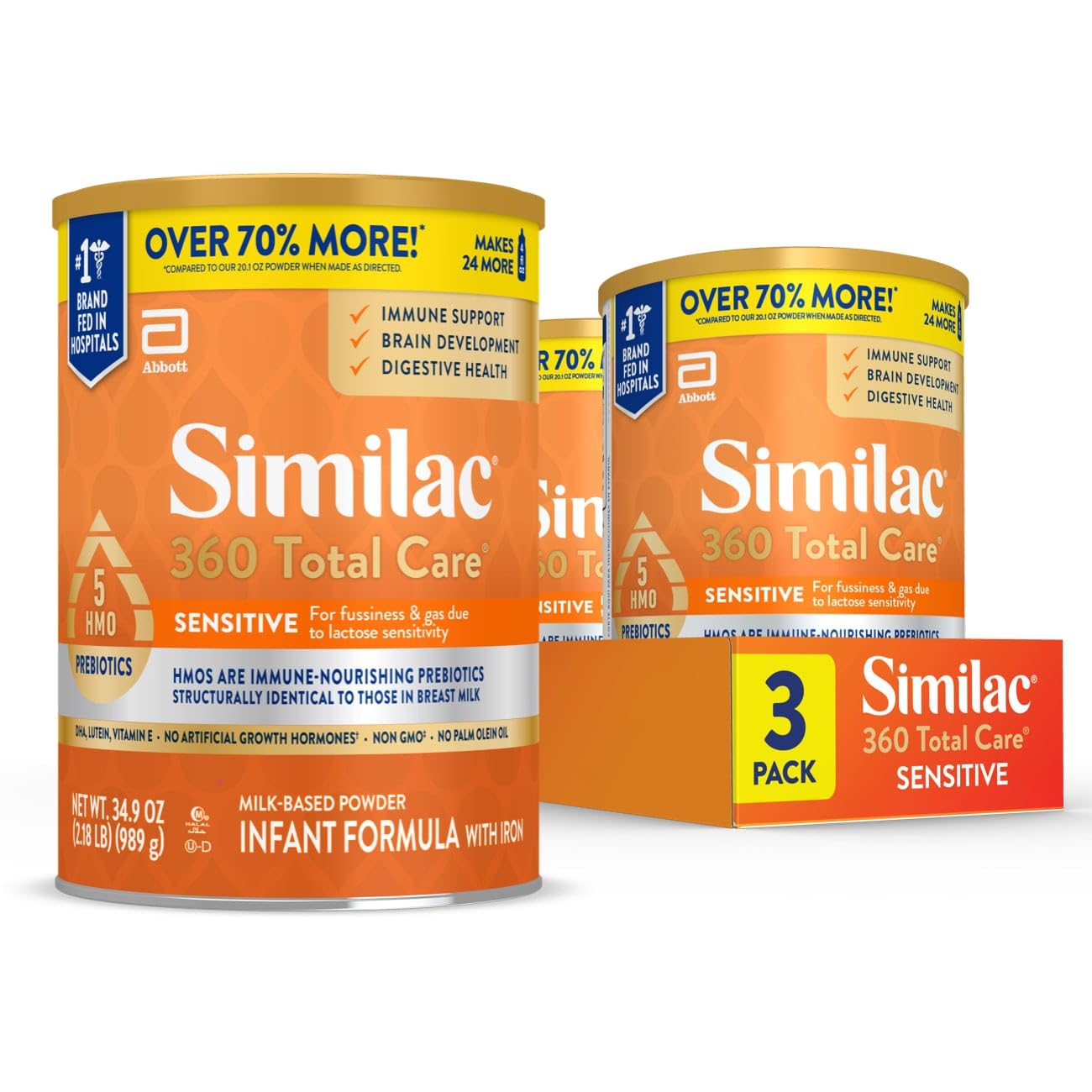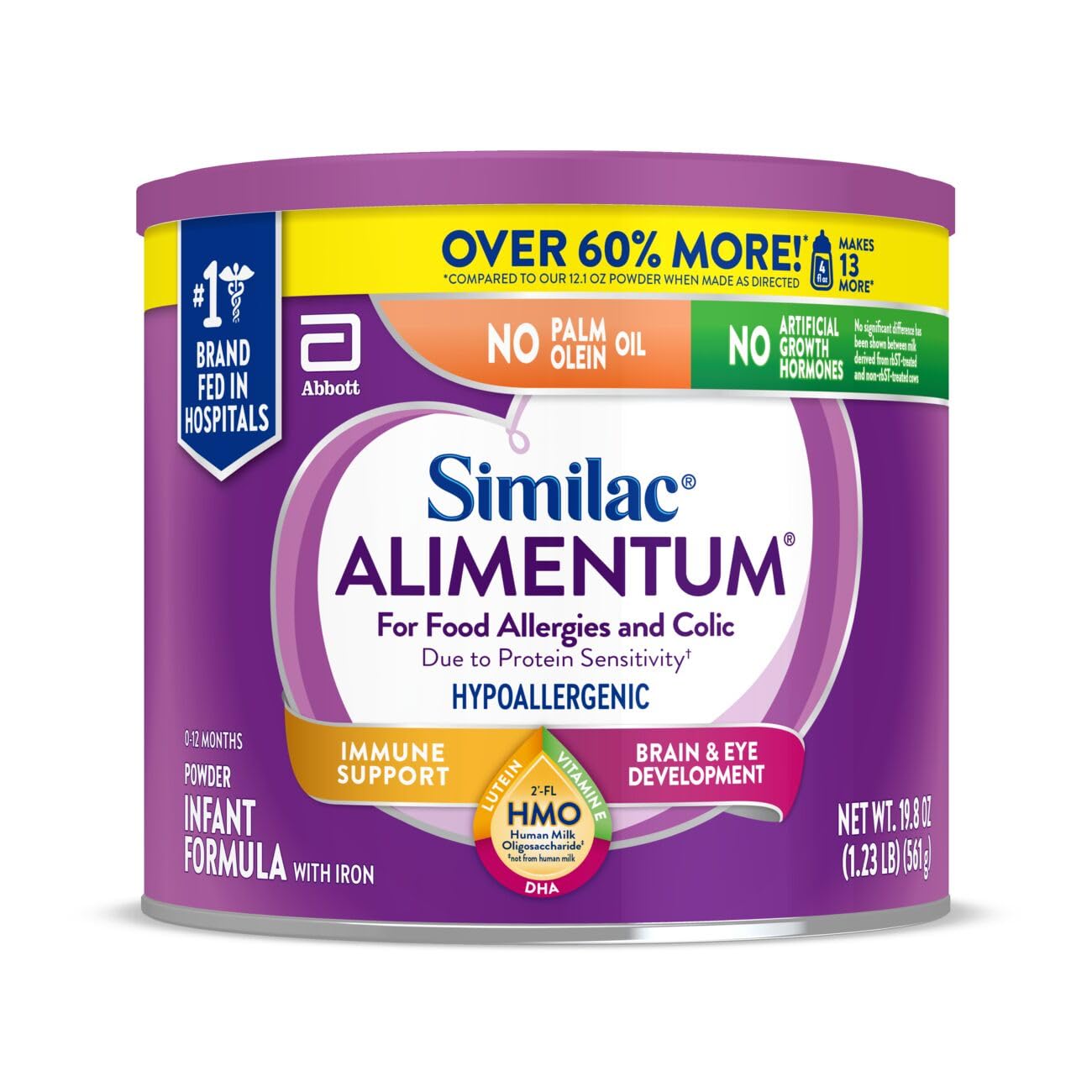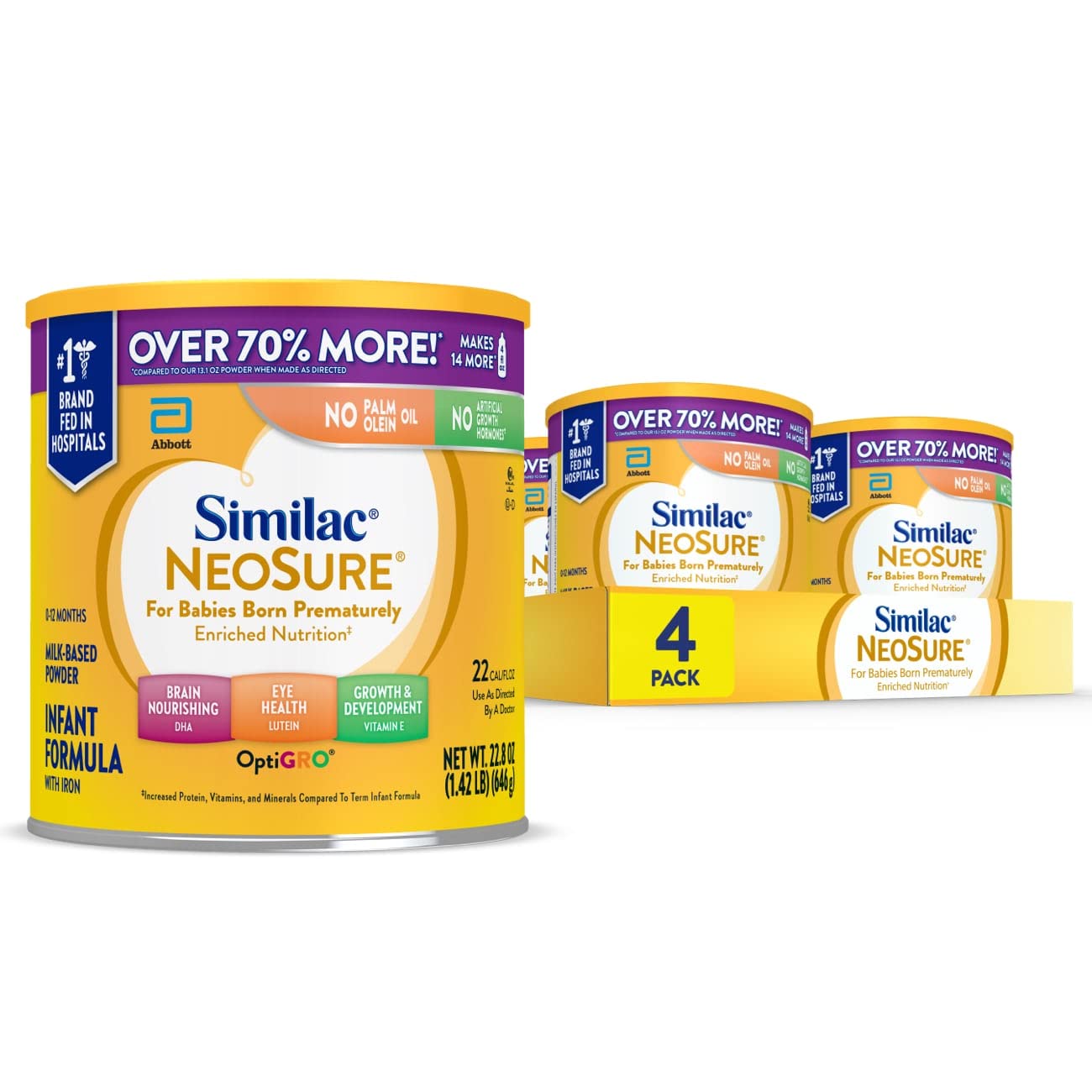
Similac NeoSure Premature Post-Discharge Infant Formula, Baby Formula Powder, 22.8-oz Value Can, Pack of 4
Style:
22.8oz (4 Count)




En stock
0.83 kg
No
Nuevo
Amazon
- GET MORE REWARDS POINTS: Scan the MySimilac QR code on select products to earn points toward a Reward
- NEOSURE IS THE #1 PREMATURE POST-DISCHARGE INFANT FORMULA BRAND
- FROM THE MAKER OF THE #1 BRAND FED IN THE NICU
- EXCELLENT CATCH-UP GROWTH1: Supports better gains in weight, length, and head circumference for premature babies when compared to term infant formula
- HELPS SUPPORT BRAIN & EYES: Has DHA and lutein, important components found in breast milk
- ALSO AVAILABLE IN CONVENIENT READY TO FEED: Great for on-the-go and late-night feeding; no mixing required
- HELPS SUPPORT BONE GROWTH: Our formula has calcium and phosphorus for baby’s growing bones
IMPORTÁ FACIL
Comprando este producto podrás descontar el IVA con tu número de RUT
¡Comprá en hasta 12 cuotas sin interés con todas tus tarjetas!
Compra protegida
Disfruta de una experiencia de compra segura y confiable
¿Cómo comprar?
![]() Garantía de entrega
Garantía de entrega
Con Tiendamia todas tus compras cuentan con Garantía de Entrega o devolución total de tu dinero.
Compras 100% seguras y garantizadas, para que pidas lo que soñás y lo recibas del mundo a tu puerta.
Saber más.¿Cómo solicitar una devolución?
Para solicitar una devolución, el cliente debe realizarlo a través de su cuenta de Tiendamia. Este proceso está sujeto a la aprobación del departamento de Devoluciones (lo cual puede demorar de 48hs a 72hs hábiles). En caso de no tener la opción en la web, el cliente debe contactarse con Atención al Cliente para iniciar la solicitud.
Los productos sin devolución son:
- Los productos que tienen un tiempo de entrega mayor a 20 días hábiles.
- Productos que por su naturaleza no admiten devolución en EE.UU. o China y, por lo tanto, Tiendamia no puede ofrecer la devolución al cliente.
Tarjetas prepagas, debito, y credito
Paga hasta en 12 cuotas sin interés con tarjetas de crédito.

Visa

Mastercard

American Express

Dinners

Discover

Lider

Midinero

OCA

OCA Blue

Tarjeta PREX
Pagos a través de PayPal
Paga en dólares con Tarjetas internacionales a través de PayPal.

PayPal
Información de Aduanas Urugauy
Régimen de Encomiendas Postales Internacionales
Dirección Nacional de Aduanas (Decreto 356/014)
Todo envío que cumpla con las siguientes condiciones, está exento de impuestos de Aduana, según el decreto 356/014.
- El monto de la compra NO puede superar los USD 200 de valor de los productos. Dicho valor NO incluye los costos de envío y manejo.
- El paquete no puede pesar más de 20 Kg.
- El destinatario de la misma debe ser mayor de edad (mayor de 18 años). La cédula declarada deberá coincidir con el nombre del titular de la compra.
- Que no sean productos prohibidos
- Máximo 5 unidades del mismo producto por orden.
- No superar las 3 compras anuales por persona: consultar franquicias utilizada
- Deben ser compras personales y sin fines comerciales.
- Datos claros del comprador/a: Nombre, C.I. y domicilio.
- Que no sean productos gravados por el impuesto (I.M.E.S.I.).
- En caso de comprar un celular, será necesario gestionar el trámite VUCE, del cual Tiendamia se hace responsable automáticamente, a no ser que el cliente opte por tramitarlo por su cuenta. Por más información: ¿Cómo se gestiona el permiso URSEC / VUCE para productos con Wifi o Bluethooth?
Algunos de los artículos que no ofrecemos, ya sea porque son prohibidos, porque son gravados por el impuesto I.M.E.S.I., o porque requieren trámites especiales: ver listado
Conoce más detalles
Similac NeoSure* premature post-discharge baby formula promotes excellent catch-up growth1 during a premature baby’s first 12 months of life. It has enriched nutrition—increased protein, vitamins, and minerals for growth compared to term infant formula—as well as calcium and phosphorus for baby’s growing bones. It has DHA and lutein to help support baby’s brain and eye development, and it has no artificial growth hormones.‡ * Not for infants or children with galactosemia. † Total US premature infant formula, all outlets as of 10/01/2024, Nielsen data. ‡ Milk ingredients are derived from milk of non-rbST-treated cows, which is not different from milk of rbST-treated cows. Reference: 1. Carver JD, et al. Pediatrics. 2001;107(4):683-689.

